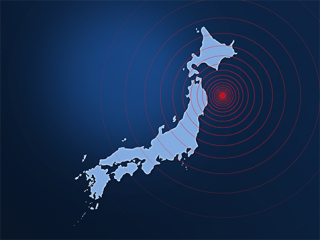
Posted by Yugo Koshima[1]
Natural disasters can cause significant damage to the economy. In Japan, the total damage caused by all types of natural disasters to public infrastructures between 1989 and 2016 amounted to 7 percent of GDP. The government provided the equivalent of 8 percent of GDP in reconstruction spending (Figure 1). In case of the 2011 Great East Japan Earthquake and Tsunami, more than 22,000 people were killed or missing and the damage to the public and private capital stock amounted to 3.4 percent of GDP. This estimate does not include the damage caused by the Fukushima nuclear accident, the cost of which, originally estimated at 2 percent of GDP, soon doubled.
There has been a heated debate on who is responsible for these damages. An answer to this question will have an impact on fiscal costs. This article will explore the government’s role in providing compensation for the damage caused by the 2011 Great Earthquake in Japan.
Housing Relief Programs
The 2011 Great Earthquake destroyed or damaged more than 400,000 homes. The government’s original plan was to provide housing assistance through the “earthquake insurance” scheme without directly subsidizing private homes. Because the damage caused by an earthquake may be too large for insurance companies to pay out, the earthquake insurance scheme (i) requires the government to pay insurance claims that exceed certain thresholds and (ii) sets ceilings on total insurance payments per earthquake. Part of insurance premiums are paid to the government. However, this scheme did not provide adequate relief. The amount of insurance payments was far smaller than the total damage to homes (Figure 2). This is mainly because the earthquake insurance is subscribed to by less than one-third of households, who are generally reluctant to pay extra premiums.
In recent years, more direct subsidies have been used to provide housing relief. In 2007, the government disaster relief program was expanded to provide subsidies for purchasing or building a residential home (up to JPY 3 million). The central and prefecture governments share a half of the fiscal costs. Furthermore, in case of the 2011 Great Earthquake, municipalities created temporary subsidy schemes for purchasing or building homes (up to JPY 4 to 10 million), which were financed by transfers from the central government. This seems to have become standard practice. In the case of the 2016 Kumamoto Earthquake, municipalities also provided temporary home subsidies, in addition to the government disaster relief program.
Compensation Scheme for Nuclear Damage
The standards on compensation for nuclear damage are set out in international treaties. The Convention on Supplementary Compensation for Nuclear Damage, adopted in 1997 (i) sets out a compensation ceiling of SDR 300 million and (ii) requires the government and the energy company to share the responsibilities for compensation. However, in Japan, there is an important difference between the treaty and the domestic law. The Law on Compensation for Nuclear Damage requires an energy company to compensate all damage without any limits. The government is allowed but not required to provide financial assistance to the energy company. This is based on the principle that the government should not directly compensate damage caused by a private sector company.
In the case of the Fukushima nuclear accident, the problem occurred because of the huge size of damage. Without government support, TEPCO would have been placed under the insolvency procedure where compensation claims would be cut. This result would have been politically unacceptable. The government instead established the Compensation Fund, which nationalized TEPCO and provided JPY 6 trillion (1 percent of GDP) of cash grants financed by government borrowing. These fiscal costs are planned to be repaid by annual contribution fees from TEPCO and other energy companies.
This scheme is similar to those for the bank recapitalization during the 1990s’ financial crisis, but the size of assistance to TEPCO is far larger than the recapitalization of any single bank. The latest estimate of nuclear damage owed by TEPCO is almost twice as large as the total recapitalization costs of more than 40 banks. It would take 94 years to pay back this size of government assistance through the current level of annual contribution fees.
In sum, the 2011 Great Earthquake raised questions as to whether the government should compensate damage caused to private property or by a private sector company, and if so, how much. Balancing the needs for government assistance and the management of fiscal costs would require clearer criteria for attributing the damage of natural disasters.
References:
Endo, Noriko (2013), Study of Nuclear Damage Compensation Scheme, Tokyo: Iwanami Press
Takeuchi, Naoto (2015), “Development of Housing Assistance Schemes for Reconstruction from Earthquake”, in Chapter 12, Municipality Governance after Earthquake, Tokyo: Toyo Keizai Press
[1] Yugo Koshima is Economist of IMF Fiscal Affairs Department
Note: The posts on the IMF PFM Blog should not be reported as representing the views of the IMF. The views expressed are those of the authors and do not necessarily represent those of the IMF or IMF policy.









